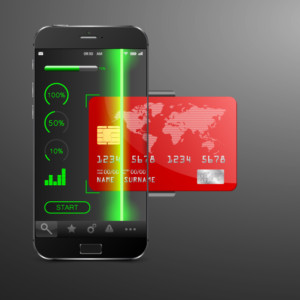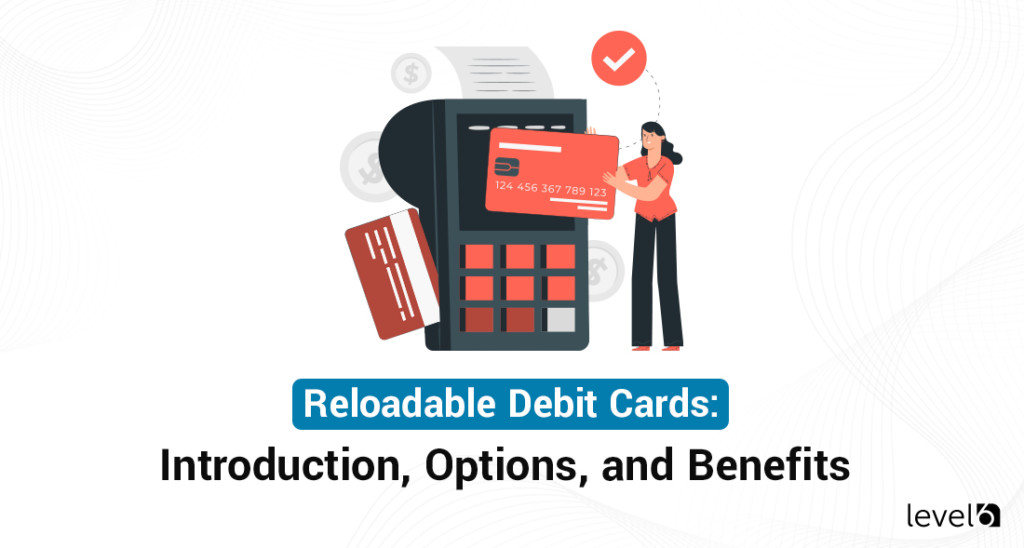There are multiple options available to you when it comes to implementing an incentive program. In terms of how rewards are actually delivered, you have lots of options, too. You might choose to simply reward a participant with a check, or by transferring funds into their account via ACH/direct deposit.
But as we’ve seen, these methods of reward delivery are less than ideal. Debit cards are often a far superior option if you want to create maximum loyalty and brand affinity while keeping things simple for both the issuer (your organization) and the recipient (an employee, third-party sales rep, or customer).
Let’s take a closer look at the available options when it comes to using a debit card as your rewards-delivery mechanism, including reloadable branded debit cards, branded prepaid debit cards, and virtual debit cards.
A Note on the Word ‘Debit’
Before we go any further, though, it’s worth taking a moment to address the use of the phrase “debit card” here, and particularly the word “debit” itself.
Here in the United States, over 90% of Americans have a checking account of some kind and, generally speaking, most people are pretty familiar with the idea of a debit card. They have a bank account that holds a certain amount of funds and, when they swipe their debit card somewhere, the account is “debited” for the same amount as the purchase. The bank then transfers the funds to the seller after a certain period of time. To use their debit card and thus have direct access to debiting their account, the card user must often enter a PIN code associated with their account for verification purposes.
Technically speaking, none of the card types we discuss in this article are actually proper “debit” cards, even though they have the word “debit” printed on them above the Visa or MasterCard logo. Instead, they fall under the “prepaid card” category. There are a couple of significant differences between these cards and those issued by banks along with checking accounts (which are proper debit cards).
Firstly, debit cards are tied to a specific “demand deposit account” (i.e. a checking account) and thus fall under Regulation E, a Federal Reserve regulation covering certain electronic funds transfers. Meanwhile, prepaid cards are connected to a so-called omnibus account. The omnibus account owner is usually the organization which issues the card itself.
Secondly, prepaid cards must be signed in order to be used. Proper debit cards can sometimes be used without entering a PIN, but in this case, they’re not actually processed as debit cards. In order to process a card as a debit card, the card’s associated PIN must be entered.
Looking to learn more about an incentive, rebate
or reward program for your business?
Curious about costs?
Try our instant pricing calculator:
The naming confusion came after an antitrust lawsuit was filed against both Visa and MasterCard regarding the rates (specifically the differences in rates) charged to retailers for running different types of cards, along with the types of cards they would accept. There’s generally a cost disparity when it comes to processing a credit card transaction, which requires a signature, and a debit card transaction, which requires a PIN code. While prepaid cards do require a signature like a credit card, they’re still typically referred to as debit cards.
In other words, the term “debit card” is a bit of a misnomer for the various prepaid card types discussed here, but it’s still the industry standard term—and it even appears written on the cards themselves.
A special note: The cards discussed in this article are sometimes generically referred to as “prepaid,” or “prepaid cards,” or even the “prepaid industry,” even when the cards are often reloadable and not technically prepaid. This moniker is misleading, but you’ll likely see it occasionally, so don’t let the generic prepaid term confuse you.
With this in mind, let’s take a look at the first and arguably best option available for the delivery of rewards funding — the custom reloadable branded debit card.
Reloadable Branded Debit Card
When clients ask us what form of reward distribution to use for their incentive program, we typically start with the reloadable branded debit card. There are several reasons why. Before we go into the advantages of the reloadable branded debit card, though, let’s be clear about what they are.
First, this type of card can be reused many times. Once you hand it over to a recipient, you can add money to the account repeatedly without needing to issue them a new card. This differentiates this type of card from prepaid cards (which we’ll discuss in the next section).
And additionally, of course, these cards are branded. This means that your company’s logo, color scheme, and more can appear directly on the card.
While the options available to you for branding will be determined by both the incentive partner and bank that you’re working with, we tend to offer our customers a few options that are fairly standard across the industry. These branding options include:
- Full Custom: This type is as customized as a branded debit card can get. It includes up to four colors (full color), a custom card carrier, the brand logo, and more. Basically, anything goes within reason.
- Partial Custom: As you might imagine, full custom cards can get a bit pricey, especially if the quantities aren’t large enough to see economies of scale. As a compromise between customization and cost, you can go with a partial custom debit card. These usually come with a single-color option, as well as some limitations on how and where things can be oriented on the card.
- Branded Stock/Affinity: The branded stock/affinity option is cheaper than a partial custom design. The lower price tag means more limitations, though. Essentially, the branded stock card amounts to a choice from a handful of standard designs, along with a single one-color company logo (usually in black or white).
- Non-Branded: Lastly, there’s the option of a non-branded card. We never recommend this to clients, as you lose out on the brand affinity that a custom debit card can create.
There are a lot of advantages to custom reloadable debit cards. First off, there’s the convenience of only having to order them once for each recipient and then simply adding funds as needed, which is convenient for you and your participant. It can also mean cost savings in the long run because you won’t need to order large numbers of disposable cards over the course of years.
Additionally, branded reloadable debit cards can create major brand loyalty and affinity. Every time one of your employees or a third-party sales rep pulls out that card to use it, they’re associating the pleasure and value of that purchase with your company. This may be happening subconsciously, but it’s happening nonetheless. Over the course of months and years of purchases, a single branded debit card has the potential to create a massive amount of positive sentiment for your brand.
Lastly, these cards can be used anywhere that Visa or MasterCard are accepted. So rather than rewarding a participant with points that can only be redeemed for certain items, you’re giving them the freedom to choose how and where they’ll spend the rewards they’ve earned.
If there’s one major downside to these debit cards, it’s cost. They cost more up front, of course, particularly if you opt for the fully customized version. Particularly when compared to a single-use prepaid card, reloadable debit cards can appear a bit pricey. If you’re just ordering a handful of them for your organization, the added cost will sting more. If you’re looking to order thousands of them, though, the difference in expense may be negligible. Additionally, these cards cost slightly more per funding load than single-use prepaid cards do.
When weighing the relative advantages and disadvantages of a reloadable versus a prepaid debit card, remember to consider the long-term, big-picture scenario. As we’ve stressed, incentive programs must be consistent to work. Assume that you’re committing to this form of rewards distribution for some time to come, and consider the cost of ordering replacement prepaid cards against only having to buy reloadable cards once.
Prepaid Branded Debit Card (aka Rebate Card)
These cards miss out on a couple of the advantages associated with a reloadable branded debit card, but prepaid branded debit cards remain an excellent option for distributing rewards. And in certain scenarios, they’re actually a better choice, particularly when rewarding a customer as part of a rebate program. Given how ubiquitous it is to use these types of cards for this purpose, we sometimes simply refer to them as “rebate cards” rather than prepaid branded debit cards.
Traditionally, an employee’s bonus, a third-party sales rep’s incentive, and a customer’s rebate would all simply be paid out with a standard check. There’s nothing wrong with a check per se, but there’s no doubt that you’re missing out on all sorts of opportunities if you go this route rather than using a branded debit card of some kind.
As is the case with reloadable branded debit cards, prepaid cards give you the advantage of baked-in affinity for the user. Whether it’s a third-party rep, an employee, or one of your customers, you’re creating brand affinity every time the user pulls out the card to swipe it for a transaction. That’s something you simply can’t accomplish with a check or direct deposit.
Additionally, prepaid cards are easy to use and activate. The recipient can usually do it with a quick phone call or website visit, and they’ll have access to their funds instantly. And just like reloadable cards, they’re accepted anywhere and everywhere.
Lastly, it’s worth pointing out that prepaid cards are particularly advantageous when it comes to less-frequent sales incentives. While it certainly makes sense to use this kind of card for a rebate (given that you won’t be reloading a customer’s card after they’ve used it), prepaid cards can also be a better choice for employee or third-party incentive programs that are one-off initiatives. While we do generally recommend putting programs in place for the long haul, this isn’t always an option. A company that’s going out of business and needs to liquidate inventory, for example, wouldn’t want to opt for reloadable debit cards as part of their sales incentive program.
The only real downside to the prepaid debit card is that it’s slightly less convenient for both the issuer and recipient. First, you’ll need to issue a new prepaid card every time a new reward is earned. Meanwhile, users will have to activate a new card repeatedly rather than simply having the amount on the card automatically funded.
Virtual Debit Cards
If you haven’t yet encountered a virtual debit card first-hand, it’s likely just a matter of time until you do.

Think about it for a moment. Do you actually pull out your debit card every time you want to make a purchase online? Probably not. Instead, you probably have card numbers (and expiration dates, and maybe even security codes) saved on your phone or desktop browser. You simply allow your browser to autofill that information when you make a purchase with a new retailer. And, of course, most online retailers offer you the option of storing your card information, making it particularly easy to make repeat purchases. Amazon’s one-click ordering is a particularly strong example of this sort of convenience.
So, the line of thinking goes, if in-person retail is on the decline, online retail is on the rise, and you don’t actually need a physical card for making these purchases, then…why provide a physical debit card in the first place? Why not simply make debit cards virtual? And, as it turns out, the virtual debit card is an increasingly popular option for distributing rewards and rebates to employees and customers.
Our advice to clients is that this is a trend worth watching and it’s worth considering the virtual debit card option. It can be particularly useful for large-scale rebate offers, where mailing out physical cards could be cost prohibitive and cumbersome. The biggest advantage for virtual debit cards (aside from their sheer convenience for the issuer) is the low-price tag that comes with them. With no physical card, no printing, no postage, and no design work, the entire process will remain cheaper than issuing a physical card.
On the flip side, there’s no denying that virtual debit cards aren’t as popular as actual physical cards, at least not at the time of this printing. One of the major downsides is the lack of familiarity you’re bound to encounter with certain users. If someone has never used a virtual debit card, the whole notion of getting their card info via email and then making purchases might confuse them. And, on top of this, there’s no denying that people like to receive something they can touch and feel. Part of what you gain with the physical debit card over a simple bank transfer is the actual item itself. In the same vein, seeing an email show up in your inbox with a link to a virtual debit card just isn’t the same as receiving an actual card in the mail (or in-person).
Using a virtual debit card as a reward option also reduces the potential for brand affinity. Sure, the recipient might think of your company when they go to use the card for an online purchase. But at the same time, you’re still missing out on the opportunity to put a physical branded card with your company’s logo and color scheme into the recipient’s wallet. Not only will brand affinity be weaker when they’re using the card—they also won’t have the opportunity to passively notice your brand image each time they open their wallet.
For these reasons, we tend to see clients opting for physical cards more often than virtual debit cards. Still, though, they’re worth keeping an eye on as the retail market continues to shift and change.

 Demo
Demo



